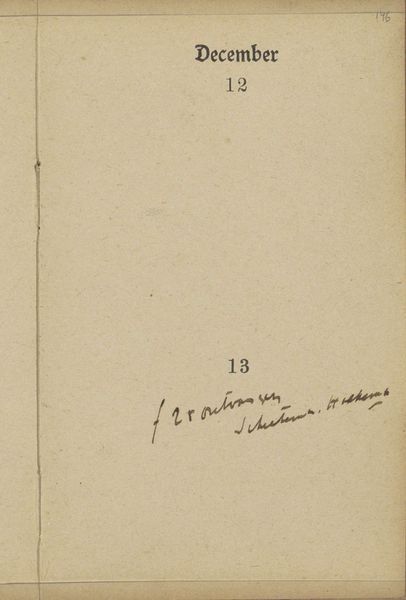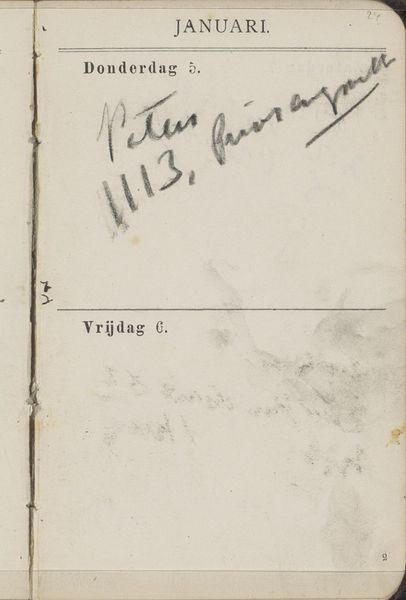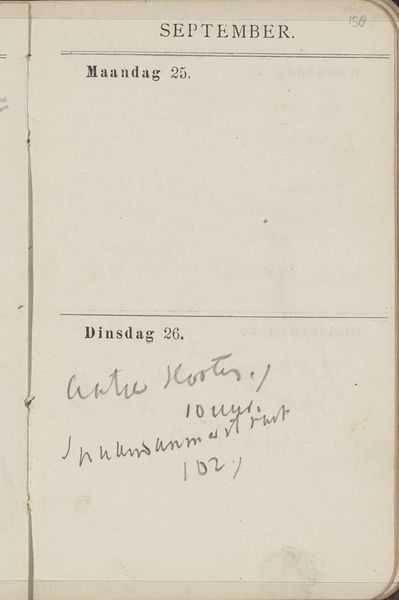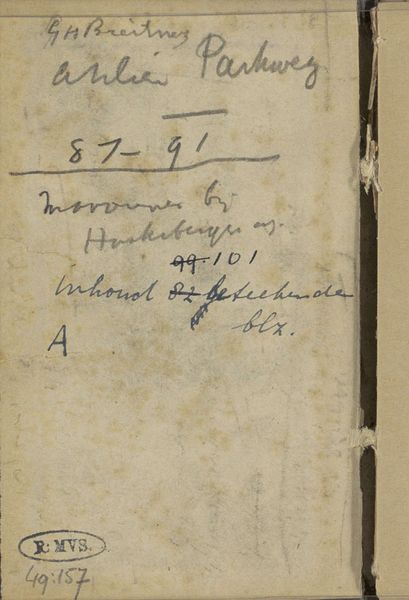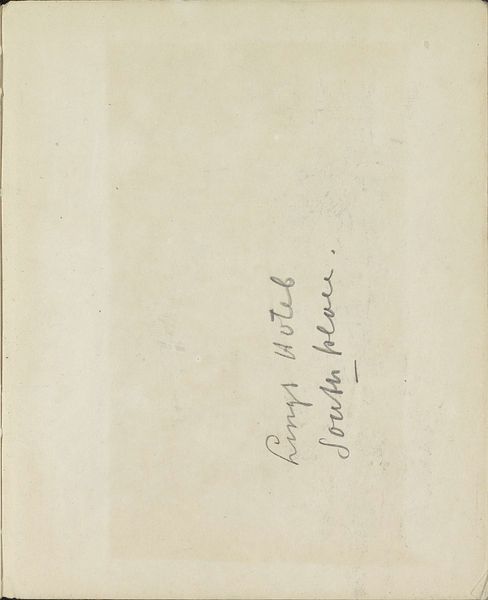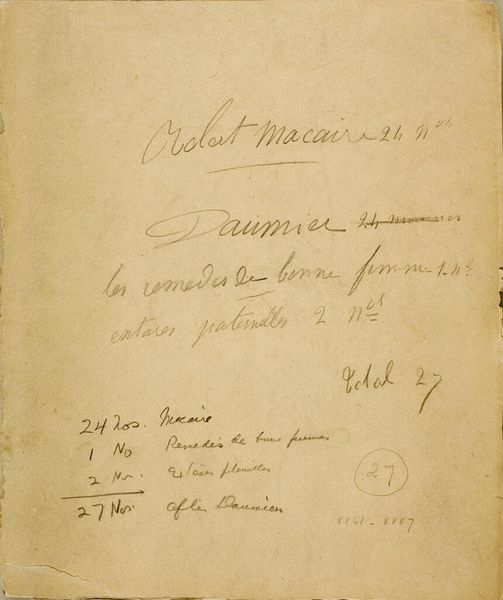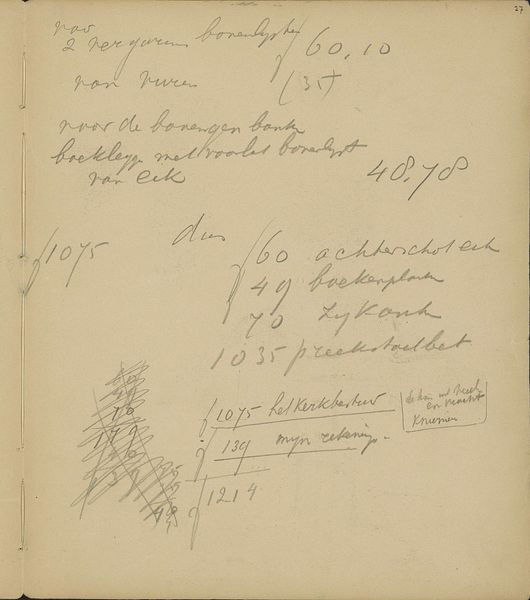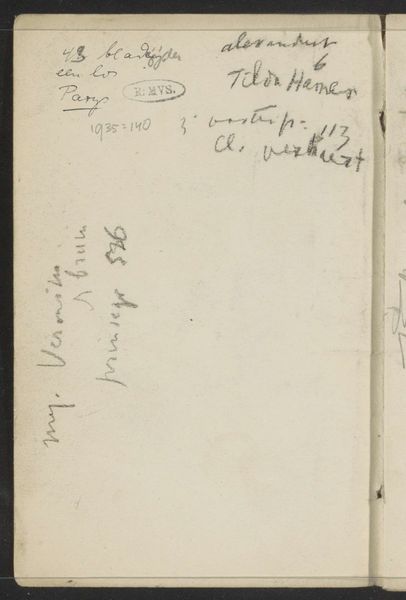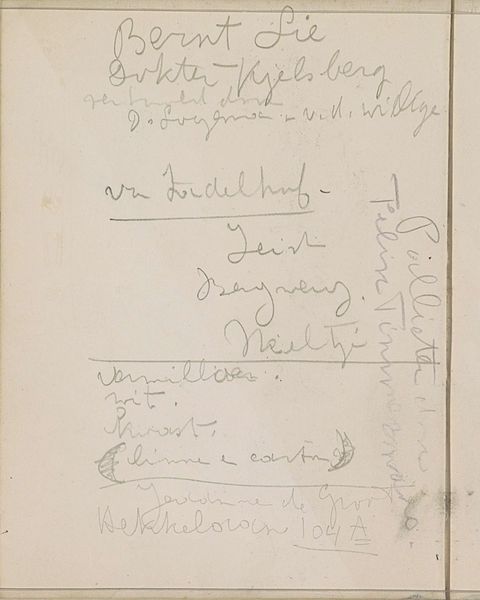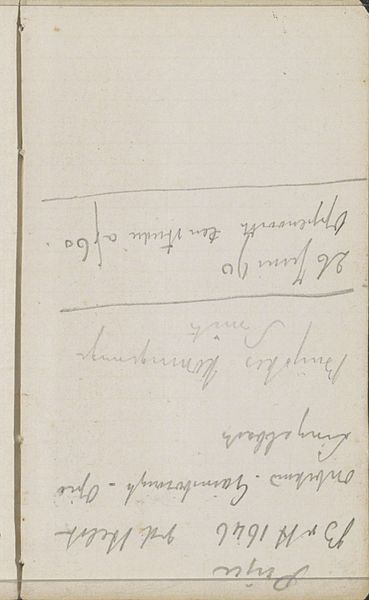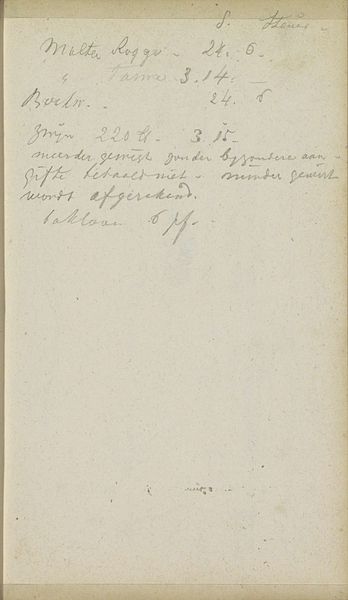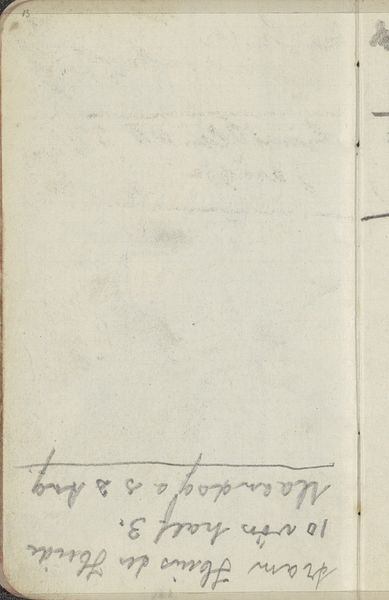
Copyright: Rijks Museum: Open Domain
Curator: Breitner’s "Annotaties," dating from 1893, offers a curious glimpse into his working process. We see what looks like a page from a planner or journal, executed in ink and pastel on paper. What's your first take? Editor: Immediately, I'm struck by its intimacy. It's almost like trespassing on private thoughts. The handwritten script gives it such an immediate, personal quality, very unlike what one might expect of museum art. Curator: Absolutely. For me, it speaks to the materiality of artistic production. This isn’t a finished painting; it's a record of planning, scheduling. Look at the date: January 29th and 30th, along with what seems like appointments or addresses, and phrases. What did the calendar symbolize to him and his process? It shows that Breitner wasn’t just waiting for inspiration. Editor: I think that question really hits home! Given the context of the late 19th century and the rise of artistic realism, I'd venture to suggest that such a piece shows us that artists were grappling with portraying modern life truthfully. Diaries and calendars would become commonplace, to plan one’s artistic activity as though it were any other job. Breitner’s style also contributes; Impressionism aimed at capturing the fleeting moment. The page allows you to look through Breitner’s mind! Curator: I'm interested in how the piece exists *as* art, especially displayed at the Rijksmuseum. Its location emphasizes the transition of functional material into something we now consider aesthetic and worthy of display, something museum-goers want to inspect. What labor went into constructing a simple drawing? It recontextualizes both his famous works and these “annotations." Editor: It also highlights how institutions shape our understanding. Imagine seeing this outside the context of a major museum, displayed without the name "Breitner." Would it command the same attention? The museum transforms what might otherwise be discarded as an ephemera into a treasured artifact, part of Breitner's artistic legacy. Curator: A transformation, indeed. A mundane object lifted to the level of art through artistic labor and then through institutional validation. Editor: Well, it’s certainly changed how I’ll view planning out my week from now on! A mundane object turns art.
Comments
No comments
Be the first to comment and join the conversation on the ultimate creative platform.
